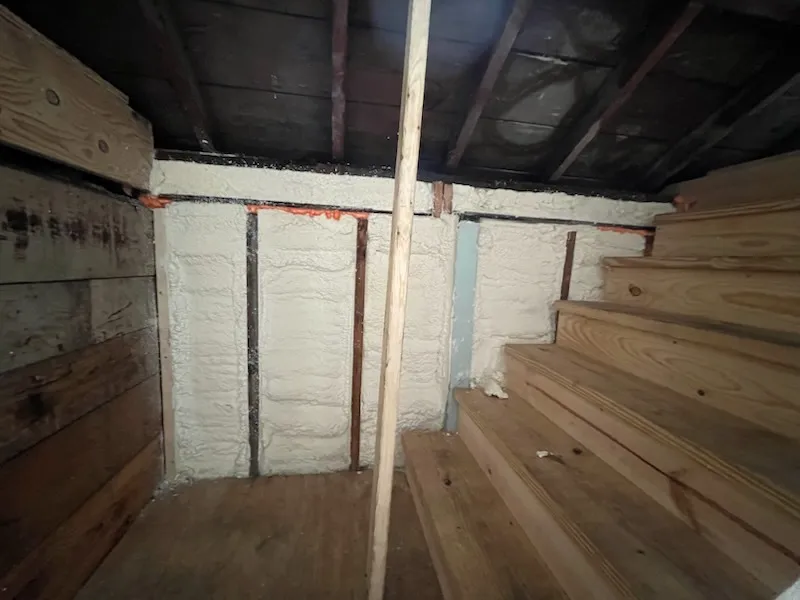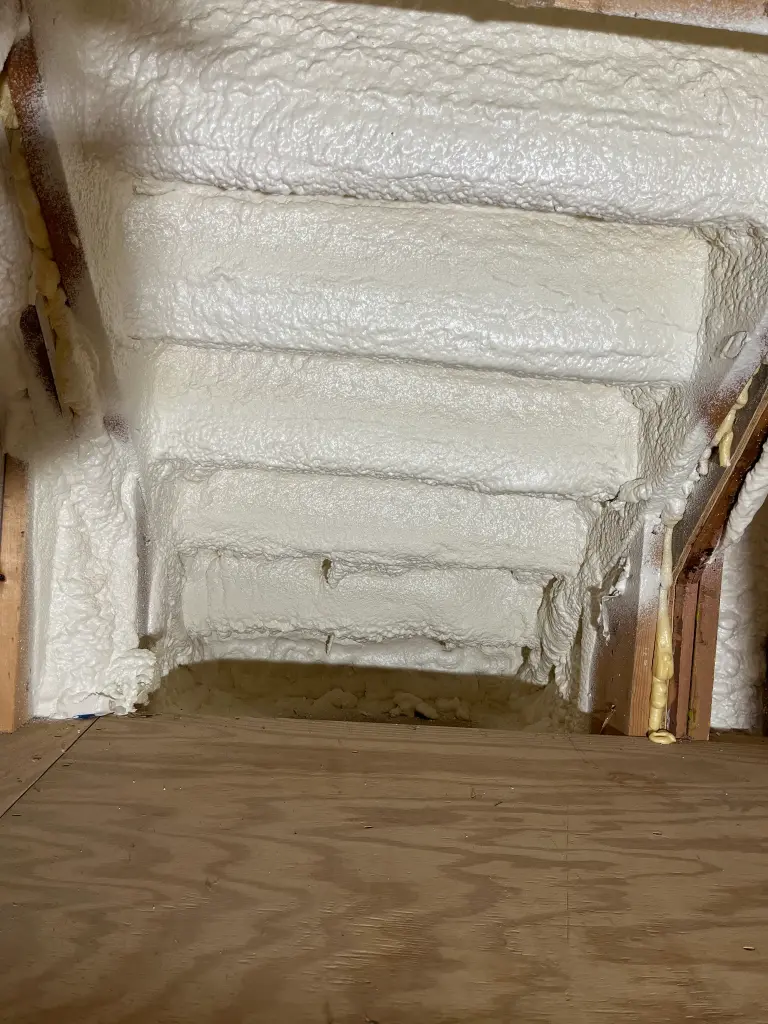
Spray foam insulation offers significant energy-saving potential in Chicago’s climate. With cold winters and humid summers, the region demands insulation that can handle large temperature swings, moisture fluctuations, and air leakage. Closed-cell spray foam, in particular, addresses these issues by sealing gaps, improving structural rigidity, and providing high R-values per inch.
The upfront cost is higher than traditional materials, but long-term energy savings and durability often offset the investment. According to the U.S. Department of Energy, proper insulation can reduce heating and cooling costs by up to 20% (Energy.gov, 2024).
This article breaks down cost, performance, installation methods, and key decision factors for homeowners and commercial property owners in the Chicago area. Insights are based on field-tested installation data, material performance, and regional building code requirements.
| Feature | Closed-Cell Spray Foam | Open-Cell Spray Foam | Fiberglass Batt | Cellulose (Blown-In) |
|---|---|---|---|---|
| R-Value (per inch) | 6.0 – 7.5 | 3.5 – 3.8 | 2.9 – 3.8 | 3.2 – 3.8 |
| Air Barrier | Yes | Partial | No | No |
| Moisture Resistance | High | Low | Low | Moderate |
| Mold Resistance | High | Moderate | Low | Moderate |
| Cost per Sq Ft (avg) | $1.50 – $3.50 | $0.75 – $1.25 | $0.40 – $1.00 | $0.60 – $1.20 |
| Lifespan | 30+ years | 15 – 20 years | 10 – 25 years | 20 – 30 years |
| Structural Reinforcement | Yes | No | No | No |
| Property | Closed-Cell Spray Foam | Application Insight |
|---|---|---|
| R-Value Consistency | High | Retains thermal performance even with seasonal moisture changes |
| Perm Rating (moisture) | < 1 perm | Functions as a vapor retarder, ideal for basements and crawlspaces |
| Application Temperature | Above 40°F | Requires controlled environment for proper adhesion and curing |
| Adhesion to Substrates | Strong | Bonds to wood, metal, concrete, and existing insulation |
| Expansion Rate | Low (30:1) | Allows precision in wall cavities and rooflines without overfilling |

Use closed-cell spray foam in rim joists and sill plates. These are primary infiltration points in Chicago basements. Foam installation reduces condensation and increases comfort in lower levels.
Closed-cell spray foam typically lasts over 30 years without degrading if installed correctly.
Only in some cases. Old insulation may need to be removed if it’s wet, compacted, or moldy.
Once cured, it is inert. Proper ventilation is needed during and after application.
Rim joists, attics, walls adjacent to unheated spaces, and crawlspaces.
Spray foam insulation offers high thermal resistance, moisture control, and air sealing in a single application. In Chicago’s weather conditions, it performs more reliably than traditional materials over time. While the initial cost is higher, energy savings and longer lifespan make it a strong long-term choice.
Evaluate space-specific needs, compare material performance, and review code requirements before selecting an insulation system.
For expert application and climate-specific recommendations in Chicago, contact:
South Chicago Insulation Phone: (779) 803-8025
Email: [email protected]
Open-cell foam can dampen airborne sound but is less effective than mineral wool or soundproofing boards.
It works well in retrofits when installed professionally, but wall access may be limited without removing drywall.
Yes, ComEd and Peoples Gas offer rebates for insulation upgrades through the Home Energy Savings program (ComEd, 2025).
Yes. Better insulation means heating and cooling systems can often be downsized, reducing long-term operational costs.
Closed-cell foam remains stable. Proper installation prevents shrinkage or gaps from forming.